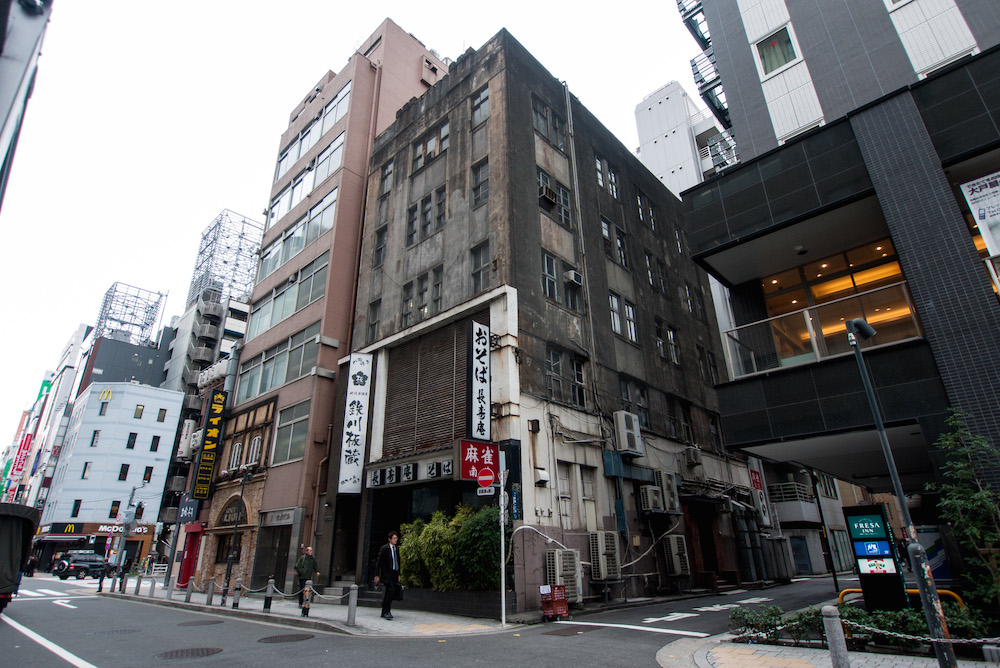Shirokanedai Institute of Public Health (c1938) to be restored

The historic Institute of Public Health building in Shirokanedai, Minato-ku, Tokyo is going to be restored and converted into a centre for palliative care for cancer patients, a children’s club and short-term child care facility.
The Institute was built in 1938 as a medical training and research centre. The 76-year old building has a total floor space of 15,000 sqm with two basement floors, five floors above ground and a 3-storey tower. It was designed by architect and engineer Yoshikazu Uchida. Uchida designed a number of buildings for the University of Tokyo and also worked on the design of the Dojunkai Apartment buildings across Tokyo and Kanagawa Prefecture. His style became known as ‘Uchida Gothic’.Read more
Mori Trust announces plans for high-rise office and hotel in Toranomon

On October 23, Mori Trust announced plans for a 180m mixed-use building for the former Toranomon Pastoral building site in Toranomon 4 Chome.
The 36-storey building will contain a hotel, serviced apartments, office and retail space. Construction is scheduled to begin in 2015 with completion by 2018. The new building will be approximately 500 meters from the proposed new station along the Hibiya Line.Read more
Revision to condominium redevelopment law could unlock potential development sites
A revision to the Act on Facilitation of Reconstruction of Condominiums is scheduled to be introduced from December that will reduce the voting ratio to sell a building and land. For buyers of brand new apartments, this news might seem insignificant, but this new amendment could influence the supply of new apartments in the future.
The Act was introduced in 2002 to encourage the redevelopment of old apartment buildings. Currently, a minimum of 80% of apartment owners must agree in order for a building to be reconstructed. For a building and land to be sold, however, the current act requires 100% of owners to be in agreement. The revision in December will reduce this to 80% for buildings built before 1981 to the older earthquake codes (called ‘kyu-taishin).
Of the 5,900,000 apartments across Japan, 1,060,000 (20%) are in ‘kyu-taishin’ buildings.
The number of condominium redevelopments in Japan is quite small. According to the Ministry of Land, Infrastructure, Transport and Tourism, there were only 183 buildings containing 14,000 apartments nationwide that were redeveloped as of April 2013.Read more
Major redevelopment planned for Yaesu district

In 2015, Mitsui Fudosan and Tokyo Tatemono will begin several large-scale redevelopment projects for the Yaesu district to the east of Tokyo Station. The project will include three buildings containing apartments, offices, retail space, education and cultural facilities.
Planning approval is expected to be announced next year. It is anticipated that the project will qualify for an allowance to the floor space index, which would a total floor area up to 1 million sqm (10.7 million sqft).
One of the features will be an underground bus terminal. While the Marunouchi district to the west of Tokyo Station has seen some very large redevelopment projects over the past few years, the Yaesu area has been lagging behind. The bus terminal currently located at the Yaesu Exit at Tokyo Station is relatively inconvenient, especially for passengers transferring to trains. By locating the terminal underground, it will offer direct access to the underground station area.Read more
Signs of life for vacant site between Daikanyama and Nakameguro

The large and vacant plot of land located between Daikanyama and Nakameguro may finally see some activity as the Tokyo Metropolitan Government and Meguro Ward have announced that they are seeking tenders from developers for the 8,500 sqm site.
The land was previously the site of lodgings for the Japanese National Railway Settlement Corporation (JNRSC). The property was acquired by the Tokyo Government and Meguro Ward in 1995 for approximately 6.4 billion Yen. Initial plans were for an aged-care facility and public housing.Read more
Singapore developer buys Seiko Estate, plans to build luxury residences

Singapore-based City Developments (CDL) and an US investment firm have purchased the historic and expansive estate of Seiko founder Kintaro Hattori in Shirokane for approximately 30.5 billion Yen (279 million USD).
CDL plan to develop luxury condominiums on the 16,815 sqm site and also plan to conserve the historic residence of Mr. Hattori which was built in 1933.Read more
Shimbashi to lose one of its oldest buildings

Shimbashi is about to lose one of its oldest buildings as the 94-year old Tsutsumi Daiichi Building is about to be torn down to make way for redevelopment.
Built in 1920, the five storey building was designed by Yunosuke Sakai and built by Toyo Concrete Kogyo. It is an early example of reinforced-concrete construction and possibly the oldest existing multi-tenant concrete building in Tokyo. Japan's first all-concrete building - the Yokohama Mitsui Bussan Building - was built just 9 years earlier in Yokohama. Sakai had assisted Oto Endo with the design of the Yokohama building.Read more
